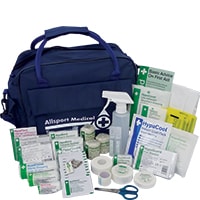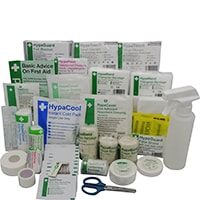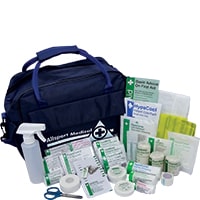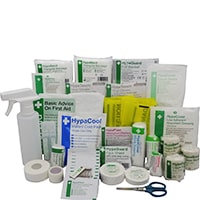
Quick Links:
First aid kits for specific sports
Sports clubs and leisure facilities first aid
Basic sports first aid
Sports are a fundamental part of maintaining the health and fitness of our society. The government recommends that adults take part in 75 minutes of vigorous activity per week and children (5-18 years) take part in 60 minutes of physical activity per day. Taking part in sports not only helps to achieve these targets but can also have a hugely positive impact on mental wellbeing.
However, many sports also involve a risk of injury. A report in the Journal of the Royal Society of Medicine found that young people aged 19 and under made up almost half (47.4%) of sports injury-related emergency department attendances. The six main sports causing injury in under-18s were football, rugby union, rugby league, trampolining, netball and horse-riding.
It is crucial that participants and organisers of sports are always prepared with first aid provisions and, ideally, training in first aid for sport. Sports clubs and associations are likely to already have such provisions after completing careful risk assessments. However, it is often more casually-organised sports – a 5-a-side game of football in the local park or playing on a trampoline in a private garden – where injuries are more likely and less prepared for. Warm-ups can often be forgotten and supervision less careful as the fun of the activity takes over.
What should a sports first aid kit contain?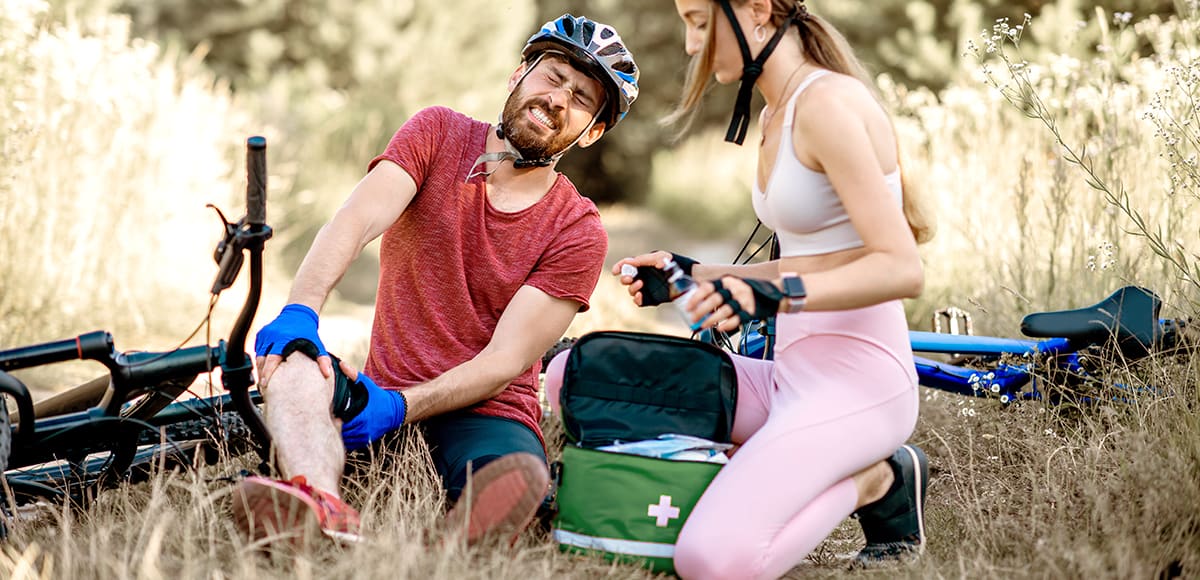
Not all sports require the same type and number of first aid supplies. However, there are core pieces of kit that would be useful in every sport. Our Sports First Aid Kit provides a comprehensive range of products for any sport and is a useful starting point for basic sports first aid requirements:
- Premium first aid bag
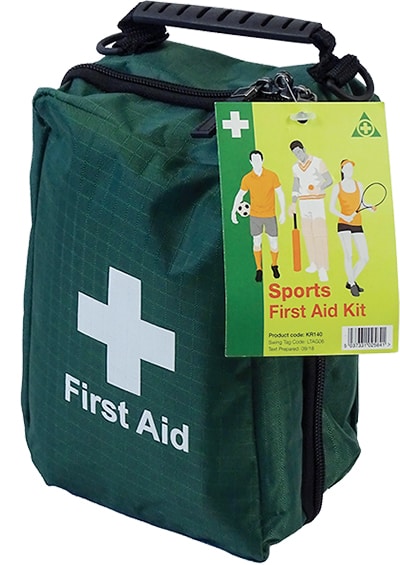
- 1 first aid guidance leaflet
- 1 medium sterile dressing
- 1 large sterile dressing
- 1 sterile eye dressing
- 1 triangular bandage
- 1 medium conforming bandage
- 1 small crepe cotton bandage
- 1 medium microporous tape
- 1 large low-adherent dressing
- 1 medium low-adherent dressing
- 1 flat face shield
- 2 20ml eye wash pods
- 1 foil blanket
- 10 moist wipes
- 20 assorted wash-proof plasters
- 12 safety pins
- 1 instant cold pack
- 2 personal protective packs: aprons, clinical waste bags and large vinyl gloves
If you are only catering for yourself or a very small group, you may want to consider our Personal Sports First Aid Kit or Value Sports First Aid Kit.
First aid kits for specific sports
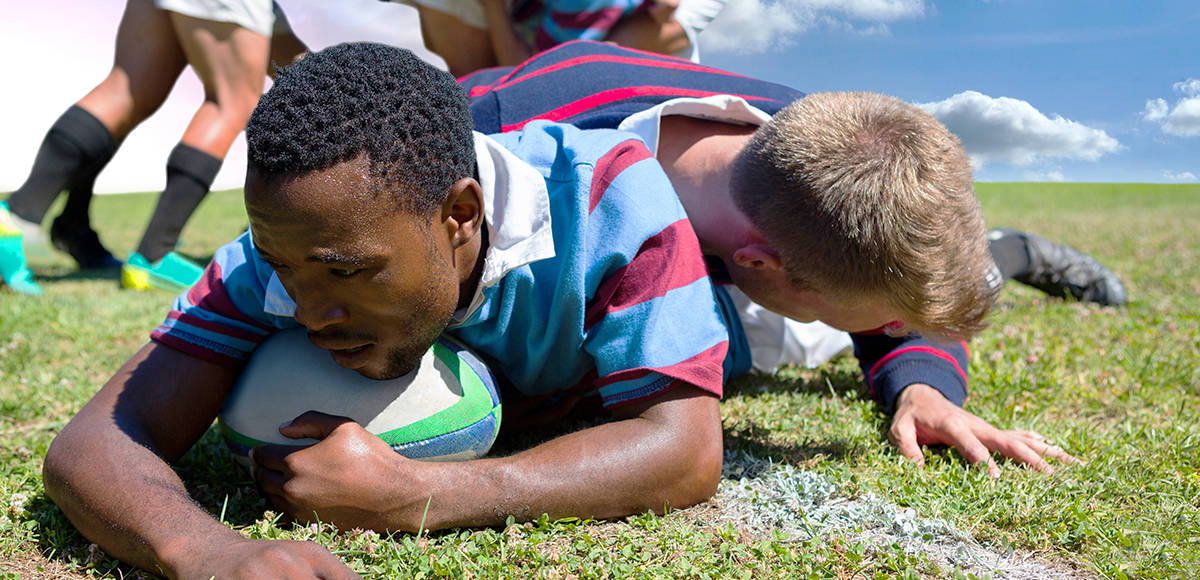
Football first aid kit essentials
The above provides all you need for a basic football first aid kit. The Essential Football First Aid Kit provides all of this in a zip-closure nylon case.
Rugby first aid kit essentials
Essential Rugby First Aid Kits will require additional items, such as the following:
- Skin closure strips
- Cohesive bandages
Larger clubs and professional teams
Larger football or rugby clubs may require additional items, such as the following:
-
EAB tape
- Additional triangular bandages and crepe bandages
- Zinc oxide tape
- Scissors
- Small trigger spray bottle
- 8 ply gauze swabs
Other specialist sports kits are available.
School Sports First Aid Kits
All schools must have first aid provisions according to HSE requirements. However, transportable PE First Aid Kits ensure that PE teachers can provide basic first aid wherever they are: fields and playgrounds or even off-site at other venues.
Sports clubs and leisure facilities first aid
Sports and leisure clubs, with employees or self-employed people, must act according to the Health and Safety at Work etc Act 1974, ensuring that workplace first aid provisions and training requirements are met, according to the number of people employed.
Generally, this law does not apply to volunteers running sports clubs where there are no employees. However, anyone with control of premises, such as a clubhouse or playing fields, has legal responsibilities under health and safety law, regardless of whether they are owners, employees or volunteers.
The HSE has provided a clear breakdown of safety requirements and suggestions for sports and leisure clubs to work through to ensure they are operating safely.
Basic sports first aid
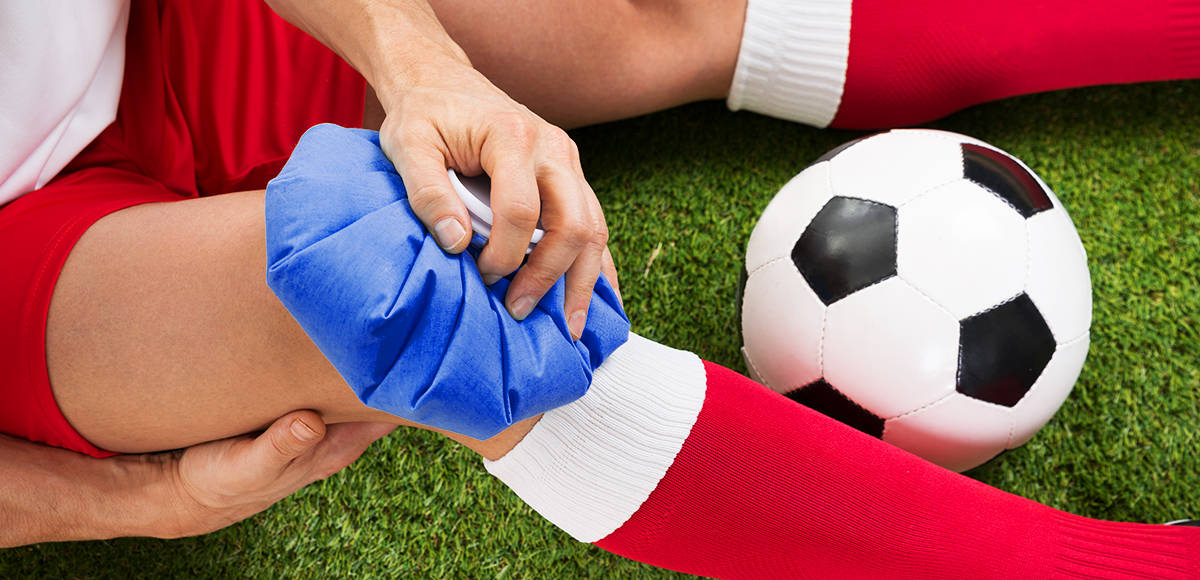
For minor sprains and strains, PRICE is the recommended method of first aid:
- Protection – use support to protect the injured area and prevent further injury.
- Rest – avoid using the injured area by reducing physical activity and avoiding exercise. You may want to use crutches, a walking stick or a sling to prevent you from putting more strain on the area.
- Ice – apply an ice pack to the injured area every 2-3 hours for around 15 minutes. Ensure the ice pack doesn’t have direct contact with the skin by using a sleeve or compression cuff.
- Compression – use elasticated bandages to limit swelling during the day.
- Elevation – try to keep the affected body part raised above the level of your heart when possible.
If you have any concerns or are not confident about what action to take, always seek medical advice.
Regardless of what sport you are playing, make sure you are always prepared with the necessary first aid kits and equipment to keep your team safe.
Read our blog for more information on first aid, or contact us for further advice and information on our products.


